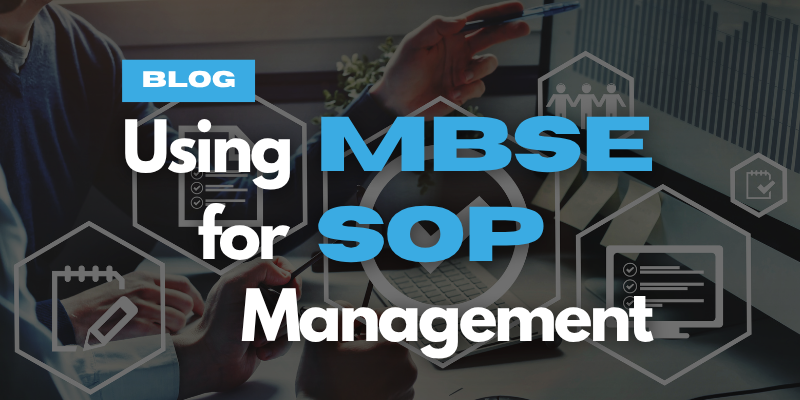An MBSE Tools List for Systems Engineers
Model-Based Systems Engineering (MBSE) has revolutionized how engineers and organizations approach system design, development, and analysis. By...
2 min read
SPEC Innovations Team
:
4/10/25 1:49 PM

Model-Based Systems Engineering (MBSE) has rapidly evolved over the past decade, transforming how organizations design, analyze, and manage complex systems. As industries seek to improve efficiency, reduce costs, and enhance collaboration, MBSE continues to play a pivotal role in shaping the future of systems engineering. This article explores key MBSE trends, emerging technologies, and the challenges that lie ahead.
MBSE has moved beyond simple system modeling to become an integrated approach that aligns stakeholders, automates processes, and improves decision-making. Traditionally, engineering teams relied on document-based methods, but MBSE provides a digital framework that enhances system visualization, traceability, and verification.

Despite its growing adoption, some critics question MBSE’s long-term viability. However, rather than fading away, MBSE is evolving. Advances in cloud computing, simulation-based engineering, and AI-driven analytics are expanding MBSE’s potential. The real challenge is ensuring engineers have the necessary skills and tools to maximize its benefits.
Read More: Is MBSE Dying? The Truth About Its Future
As MBSE becomes the standard in systems engineering, the question arises: What’s next? The future of MBSE is not just about refining existing practices but integrating new capabilities such as AI-driven automation, digital twins, and model-based verification. Engineers and organizations must prepare for the next phase of digital transformation.
Read More: What Comes After MBSE?
Several transformative trends are shaping the future of MBSE:
AI and Automation: Automating model creation, validation, and optimization.
Digital Engineering Ecosystems: Enhancing collaboration across disciplines and industries.
Interoperability & Open Standards: Breaking down silos with standardized modeling frameworks.
Cloud-Based MBSE: Enabling real-time access to models and data from anywhere.
Digital Twins: Bridging the gap between virtual models and real-world systems.
Read More: What’s Next for MBSE? Future Trends and Innovations
Drawings vs. Models: A Shift in Systems Thinking
One of the most persistent debates in MBSE is whether traditional engineering drawings still hold value in a model-driven world. While visual representations remain useful, true MBSE moves beyond static drawings to dynamic, data-rich models that support real-time analysis and decision-making.
A key part of this shift involves rethinking how we use tools like SysML. While SysML diagrams have long been a staple in MBSE, they are often criticized for being overly complex and difficult to interpret; sometimes described as looking like “ancient scrolls.” As MBSE trends move toward greater usability and collaboration, modern SysML tools must evolve to become more accessible, intuitive, and integrated into broader digital engineering ecosystems.
MBSE is not just a passing trend. It is the foundation for the future of systems engineering. As technology advances, organizations must adapt to new methodologies, tools, and best practices to stay ahead. By embracing MBSE trends such as AI, digital twins, and cloud-based modeling, engineering teams can unlock new levels of efficiency and innovation.
Stay informed and explore the latest MBSE insights to prepare your organization for the future of model-based engineering with a monthly newsletter. ⬇️
Have questions about model-based systems engineering or requirements management? Talk to an expert and see how Innoslate can streamline your projects from start to finish.

Model-Based Systems Engineering (MBSE) has revolutionized how engineers and organizations approach system design, development, and analysis. By...

Model-Based Systems Engineering (MBSE) quickly gained traction as a transformative approach to systems engineering. By using models as the primary...

In complex operational environments, organizations must ensure that their Standard Operating Procedures (SOPs) are accurate, up-to-date, and...